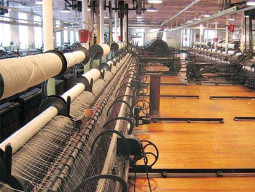
ISLAMABAD: On June 20, 2016, the China Association of Small and Medium Enterprises (CASME) officially launched a textile-focused industrial park to be built near Ahmedabad in the Gujarat province of India.
Phase-I of this $1-billion industrial park is expected to be completed by the end of 2017. More than 100 Chinese enterprises have shown their willingness to invest in the park.
Chinese interested in setting up auto unit in Pakistan
Vietnam has also become a hot investment destination for Chinese textile companies, which are pouring millions of dollars for establishing manufacturing facilities there. Texhong, a large Chinese textile group, has four production bases in Vietnam, which are churning out 300,000 tons of textiles each year and make up 43% of its total production capacity.
Chinese companies from textile power houses of Guangdong, Jiangsu and Zhejiang provinces have already invested in Vietnam and are further expanding their capacities there.
For overseas investments, Chinese textile industry has adopted both the above models. They are building dedicated industrial parks for investment as well as setting up factories in existing infrastructure in the host countries. Unfortunately, Pakistan is missing on the Chinese radar from both the investment models.
The Chinese textile industry is indeed on the move. It has not only invested in the emerging economies of Asia and Africa, but is also taking stakes in the European and American textile enterprises. Matter of the fact is that the bulk of Chinese textile investments reside in developed countries.

China’s annual textile exports stand at $284 billion, a whopping 37% share in $766 billion worth of global textile trade.
China to supply Pakistan with eight new attack submarines
Pakistan’s case
In comparison, Pakistan’s textile exports of $13 billion make up a paltry 1.7% of the global market. As it happens with any efficient economy, Chinese textile industry is hitting the productivity plateau with limited space for further gains. It has to move to the next stage of high-value branding area.
However, ironically even now when China is moving out of the low value-added textiles, the advantage is not being taken by Pakistan, but other low-cost operators such as India, Bangladesh and Vietnam are picking up the slack.
Pakistan is even losing its market share to India and Vietnam in yarn exports to China. It seems like Pakistani textile sector is unable to compete with more efficient producers in the international markets.
Pakistan does have the relevant endowments for a sustainable textile industry. It is the fourth largest cotton producing country with a strong supply chain, reasonably skilled manpower and presence of a large number of textile enterprises.
However, Chinese interest in joint ventures or Greenfield investments in Pakistan’s textile sector is lacking. A couple of years ago, we did read news about Shandong Ruyi, a Chinese textile enterprise, buying Masood Textile. For unknown reasons, the deal never materialised.
Instead, the same Chinese company bought a controlling stake in SMCP, the French fashion firm.
Pakistani government has been highlighting the potential of the country as a relocation base for Chinese textile enterprises. Unfortunately, not much of this rhetoric is converting into reality.
Numerous reasons like power shortage, high cost of business, security situation and so on could be mentioned for this below par performance of the textile industry. One can often read half a page or more so advertisements by local textile associations appealing to the government for some more concessions to save their ever-sinking ship.
China eyes Pakistan as potential market
The exceptions
Presence of dynamic and progressive textile groups in Pakistan is more of an exception than rule. These enterprises have established deep linkages and strong brands in adverse operating conditions. Let us focus on exceptions that may lead to collaboration with Chinese textile industry.
Private sector predominantly owns Chinese textile industry. It makes the investment solicitation task all the more difficult from competition perspective. There are no short cuts on this path.
Textile trade associations and progressive groups have to invest in researching the Chinese textile industry. Only then they will be able to find credible leads to convert into tangible investment on the ground.
The writer is a director in a research institute in Islamabad and was previously working as an entrepreneur in China
Published in The Express Tribune, September 5th, 2016.
Like Business on Facebook, follow @TribuneBiz on Twitter to stay informed and join in the conversation.



































































COMMENTS (14)
Comments are moderated and generally will be posted if they are on-topic and not abusive.
For more information, please see our Comments FAQ